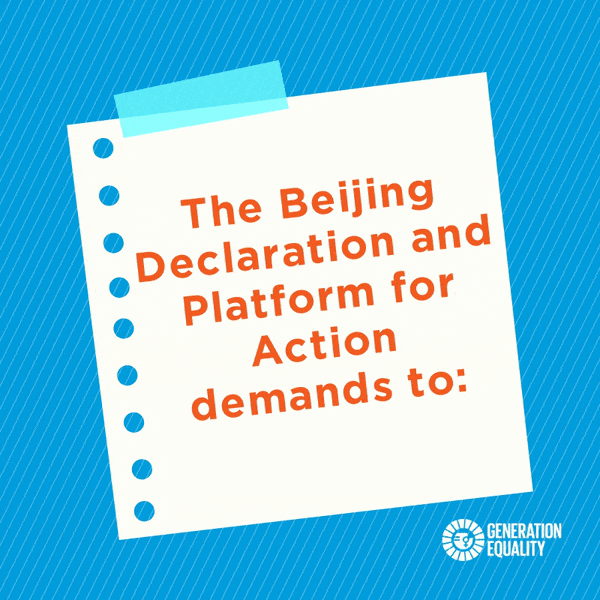International Girl Child Day
International Girl Child Day
Every year, October 11 is celebrated as the International Day of the Girl Child, to recognize girls’ rights and the unique challenges girls face around the world.
Background
On December 19, 2011, United Nations General Assembly adopted Resolution 66/170 to declare October 11 as the International Day of the Girl Child. The International Day of the Girl Child focuses attention on the need to address the challenges girls face and to promote girls’ empowerment and the fulfilment of their human rights.
Girls are breaking boundaries and barriers posed by stereotypes and exclusion, including those directed at children with disabilities and those living in marginalized communities. As entrepreneurs, innovators and initiators of global movements, girls are creating a world that is relevant for them and future generations.
Theme for 2023 - Invest in Girls' Rights: Our Leadership, Our Well-being
This year the theme is “"Invest in Girls' Rights: Our Leadership, Our Well-being".
This year, at a time when we are seeing a range of movements and actions to curtail girls’ and women’s rights and roll back progress on gender equality, we see particularly harsh impacts on girls. From maternal health care and parenting support for adolescent mothers, to digital and life skills training; from comprehensive sexuality education to survivor support services and violence prevention programmes; there is an urgent need for increased attention and resourcing for the key areas that enable girls to realize their rights and achieve their full potential.
Responding to girls’ calls for change, the global community must move beyond reaffirming commitments and invest boldly in the action needed to make that change. When we pay attention, we see that, already, many girls are championing solutions and change in their communities.
In almost every country, patriarchy and power dynamics afford boys comparative advantages compared to girls in most domains. These advantages accrue over time. During adolescence, paths diverge considerably. Social and gender norms constrict adolescent girls’ access to public spaces, socialize girls to be docile and obedient (“good girls”), and reinforce perceptions that girls’ appearances, and potential and actual role in care work, is valued more than their studies in school, leadership in business, or voice in policymaking.
This divergent path is fraught with multifaceted challenges and interconnected violations of girls’ rights. As a result of these patriarchal dynamics playing out at every level – from formal policymaking institutions to community norms, family behaviours and individual attitudes – we see stark ways in which girls are left behind across multiple dimensions
Key actions
- Centre girls in the protection and promotion of rights
- Recognize, celebrate and support girls' leadership
- Introduce and scale up multi-sectoral programmes that support adolescent girls' well-being
- Ensure information, services and systems meaningfully change to be adolescent-girl-friendly
- Make structural changes to scale up funding for girls (and not as a one-off)
Beijing Declaration and Platform for Action
 The Beijing Declaration and Platform for Action is the most progressive blueprint ever for advancing the rights of not only women but girls. Now, nearly 25 years later, the Platform for Action remains a powerful foundation for assessing progress on gender equality. It calls for a world where every girl and woman can realize all her rights, such as to live free from violence, to attend and complete school, to choose when and whom she marries, and to earn equal pay for equal work.
The Beijing Declaration and Platform for Action is the most progressive blueprint ever for advancing the rights of not only women but girls. Now, nearly 25 years later, the Platform for Action remains a powerful foundation for assessing progress on gender equality. It calls for a world where every girl and woman can realize all her rights, such as to live free from violence, to attend and complete school, to choose when and whom she marries, and to earn equal pay for equal work.
The Platform for Action specifically calls on the global community to:
- Eliminate all forms of discrimination against girls.
- Eliminate negative cultural attitudes and practices against girls.
- Promote and protect the rights of girls and increase awareness of their needs and potential.
- Eliminate discrimination against girls in education, skills development and training.
- Eliminate discrimination against girls in health and nutrition.
- Eliminate the economic exploitation of child labour and protect young girls at work.
- Eradicate violence against girls.
- Promote girls’ awareness of and participation in social, economic and political life.
- Strengthen the role of the family in improving the status of girls.
Source : UNICEF
Related resources
Last Modified : 10/17/2023
This topic provides information about Aapki beti h...
Scheme for Care and Support to Victims under Secti...
This topic covers information about My aim-my targ...
This topic covers information about Footgal
